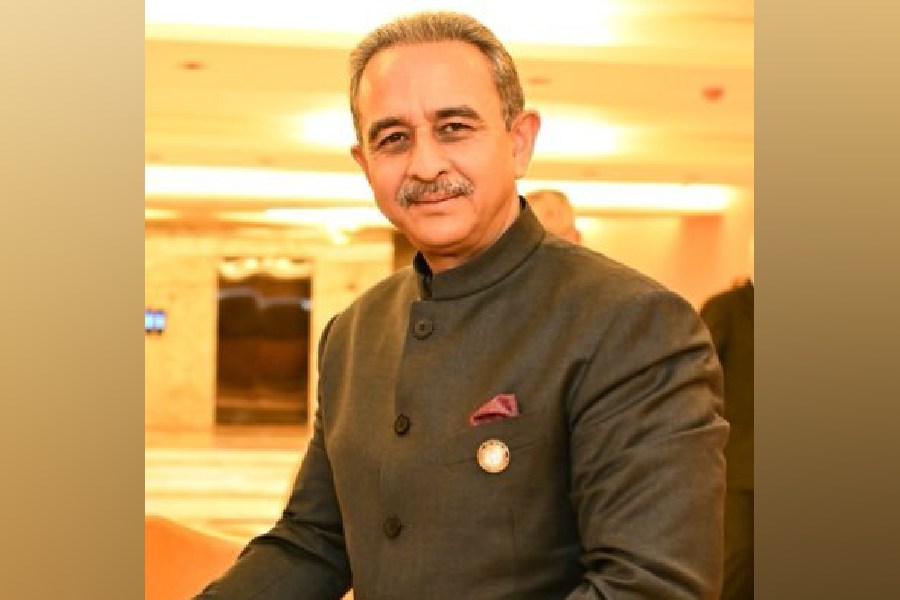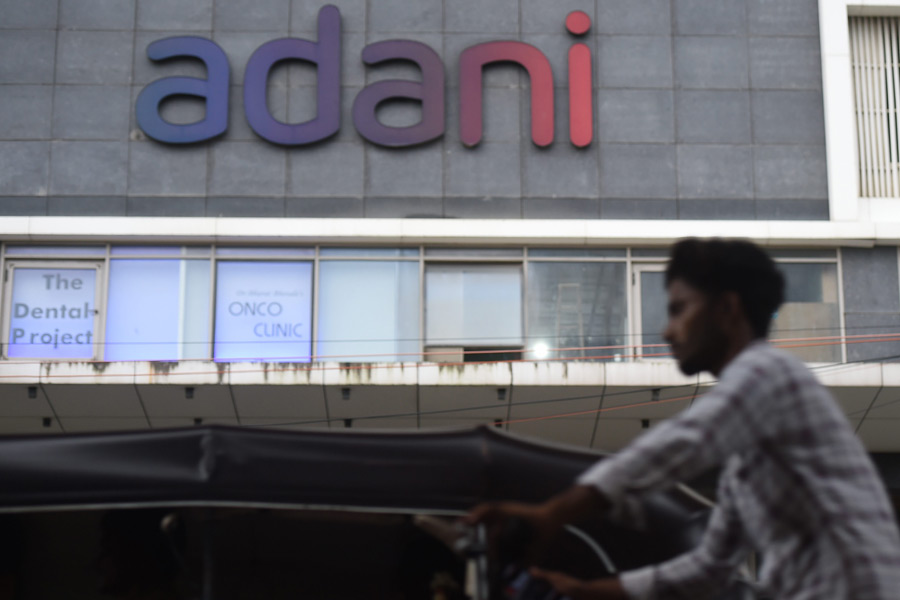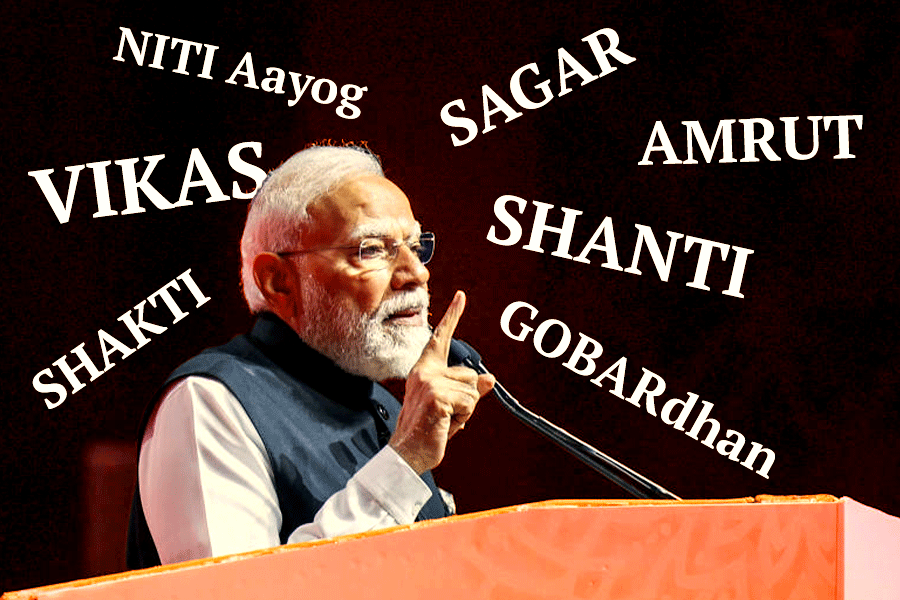 |
| TRUE GRIT: (Above and below) Commandos rescue hostages from the Taj Mahal Hotel in Mumbai |
 |
Call it foresight on hindsight. Even as the hostage crisis was playing out in Mumbai, the Calcutta police forwarded a proposal to the state government — the setting up of a special hostage rescue unit for the city. This “crack” unit, a senior official says, will be modelled on the lines of forces in the United States and Israel. “Hostage taking is the weakest link in our country’s security system,” says the official.
Hostage crises are not new to India. There have been several high-profile cases — the Rubaiya Sayeed kidnapping, the Hazratbal shrine siege, the IC-814 hijacking, the abductions by sandalwood smuggler Veerappan — besides several cases in Kashmir that have not grabbed the headlines. But none on the scale seen in Mumbai, says veteran police officer Ved Marwah, who was special advisor in Kashmir and also director general of the National Security Guards (NSG).
The scale of the attack — being described as the worst since 9/11 — also appears to be a first for the world. “This is a demonstrative operation rather than a classical hostage operation,” says Yoram Schweitzer, director of the terrorism and low intensity warfare project of Israel’s Institute for National Security Studies and former head of the international terrorism wing of the defence force’s military intelligence division. Though there has been some criticism internationally that Indian forces stormed in too early, Moty Cristal, CEO of NEST (Negotiation Strategies) Consulting, an Israeli security expert who has worked as a crisis negotiator for the Israeli government, insists they have done a good job. Clearly, the Mumbai siege has put the spotlight firmly on India’s ability to deal with hostage situations.
Response to any hostage crisis has two parts — surgical operations to rescue hostages and negotiations. The skills required for both are vastly different.
All security forces (except for the police) are trained in commando operations to rescue hostages. Police forces in some states such as Delhi, Tamil Nadu and Maharashtra have commando-like units. “Our stormtroopers are among the best in the world,” says a Tamil Nadu police officer, “but we sorely lack negotiating skills.” Agrees A. Vikram Sood, former director of the Research and Analysis Wing (RAW): “We are less than adequately equipped when it comes to negotiations.”
It is only the NSG — set up in 1985 as a counter-terrorism force — that has built-in capacity for negotiation, though its negotiators may not come to the forefront. During Operation Black Thunder in the late 1980s, it used different people to talk to the militants holed up inside the Golden Temple before storming it and flushing them out. There are officials across various agencies, including the police, who have been trained in negotiations, but there is no organised negotiating team. “We need to have that,” asserts the Tamil Nadu police officer.
Agrees S. Kanan, former head of Tamil Nadu’s Special Task Force (STF), set up to deal with Veerappan and whose officials and commando forces are trained in storming buildings and raiding forests to rescue hostages. “Hostage negotiations are usually done by bureaucrats who work on the instructions of the government. The police are not involved.”
Many countries have separate wings to conduct rescue operations and negotiations, both working closely together. “The negotiation is part of the operational strategy,” says Cristal. In the United States, the Federal Bureau of Investigation (FBI) has a hostage rescue team to handle commando operations, as well as a crisis negotiation unit (CNU) which manages negotiations during any crisis event. Israel has separate hostage handling teams for criminal and terrorist hostage events, each with a commando unit and a negotiating unit. While the criminal hostage team is under the police, the terrorist hostage team is with the military. There is, points out Cristal, a clear conceptual difference between the two. “Criminals take hostages for a limited purpose; terrorists are not afraid of dying.”
Negotiation requires specialised training. In a hostage situation, says Marwah, it is necessary to have patience, not get provoked and go step by step. The FBI’s CNU team undergoes a two-week negotiation course. The behavioural training that Indian police officers get is nowhere close to what their counterparts in the West get, says the Tamil Nadu official.
NEST runs a seven-day intensive training course for people outside Israel, with a lot of emphasis on psychological training — the first building block of a successful negotiator. Negotiators are trained to classify a hostage crisis and tailor responses to it. There are expressive acts of hostage taking (such as the one in Mumbai, where terrorists mainly want to make a point) or instrumental ones, when the individuals are kidnapped for ransom or extortion and a clear, realistic, and reasonable list of demands is issued in the early stages of the crisis. Then there are planned events of hostage taking (as in the case of the Beslan school hostage crisis in Russia in 2004, where 1,100 people were held hostage for three days) or “accidental” events where a certain operational plan is disrupted and the hostage situation develops as a result.
“Each event has its characteristics, dynamics and therefore its unique negotiation strategies,” says Cristal, who played a prominent role in negotiations during the 38-day siege of the Church of Nativity in Bethlehem in 2002. India, laments M.K. Dhar, former joint director of the Intelligence Bureau, does not have specialised institutions to impart such training.
The need for such training becomes important considering India has not been very successful in negotiations with hostage takers, whether it has been a criminal event or a terrorist event.
Veerappan’s ransom demand was met when he abducted Kannada film star Rajkumar in 2000. But when he abducted former Karnataka minister H. Nagappa in 2002, the government went slow on negotiations because the demands were considered unreasonable. Nagappa was killed. “What is important,” says Marwah, “is not to do anything to make the terrorists desperate, to keep talking, wear them down and buy time.” In the case of various terrorist hostage incidents in Kashmir, the government quickly capitulated to terrorist demands. A case in point was the kidnapping of Indian Oil executive director K. Doraiswamy in 1991. The terrorists asked for five militants to be released, the governor G.C. Saxena wanted to take a tough line but the Centre, recalls Marwah, ignored him and finally released 12 militants.
“Expert negotiations are not possible when politics enters the scene,” says Sood. “Political interference often limits our ability to negotiate and push the envelope further.” Politicians and professional negotiators must work in tandem, asserts Schweitzer. “In a democracy, decisions on concessions of demands must involve the political echelons, while the practical negotiations are handled by the professional negotiators,” he says. Negotiations are not always about conceding demands or reaching a deal but playing for time while gathering information and intelligence to support the operational assault or wearing the terrorists out.
As the hostage crisis winds down, the debate over whether to have a federal agency or state level units has resurfaced. Marwah isn’t in favour of replicating the American or Israeli model of a centralised force. “A force from Delhi cannot operate in Bastar,” he says, while making out a case for all states, especially the terrorist affected ones, to have a small, dedicated commando force to deal with such situations. But what’s most important, says the Tamil Nadu official, is to train people in negotiation. “There should be no negotiation on this.”
Hostage history
1989
Rubaiya Sayeed, daughter of Mufti Mohammad Sayeed, the then home minister. Kidnapped in Kashmir.
Militants released.
1991
Nahida Soz, daughter of Saifuddin Soz, then a National Conference leader and now with the Congress. Kidnapped in Kashmir.
Militants released.
1991
K. Doraiswamy, the then executive director, Indian Oil Corporation. Kidnapped in Kashmir.
Militants released.
1993
Siege of Hazratbal shrine in Kashmir
Militants were freed in six months.
1994
V. Chidambaranathan, DSP, directorate of vigilance and anti-corruption, Coimbatore district, Tamil Nadu Police. Kidnapped by sandalwood smuggler and bandit Veerappan.
Rescued after 27 days.
2000
Filmstar Rajkumar. Kidnapped by Veerappan in Tamil Nadu.
Released after ransom was paid.
2002
H. Nagappa, former Karnataka minister. Kidnapped by Veerappan in Tamil Nadu.
Killed.










